News
Applicazioni dell’Intelligenza Artificiale con la Tecnologia Blockchain
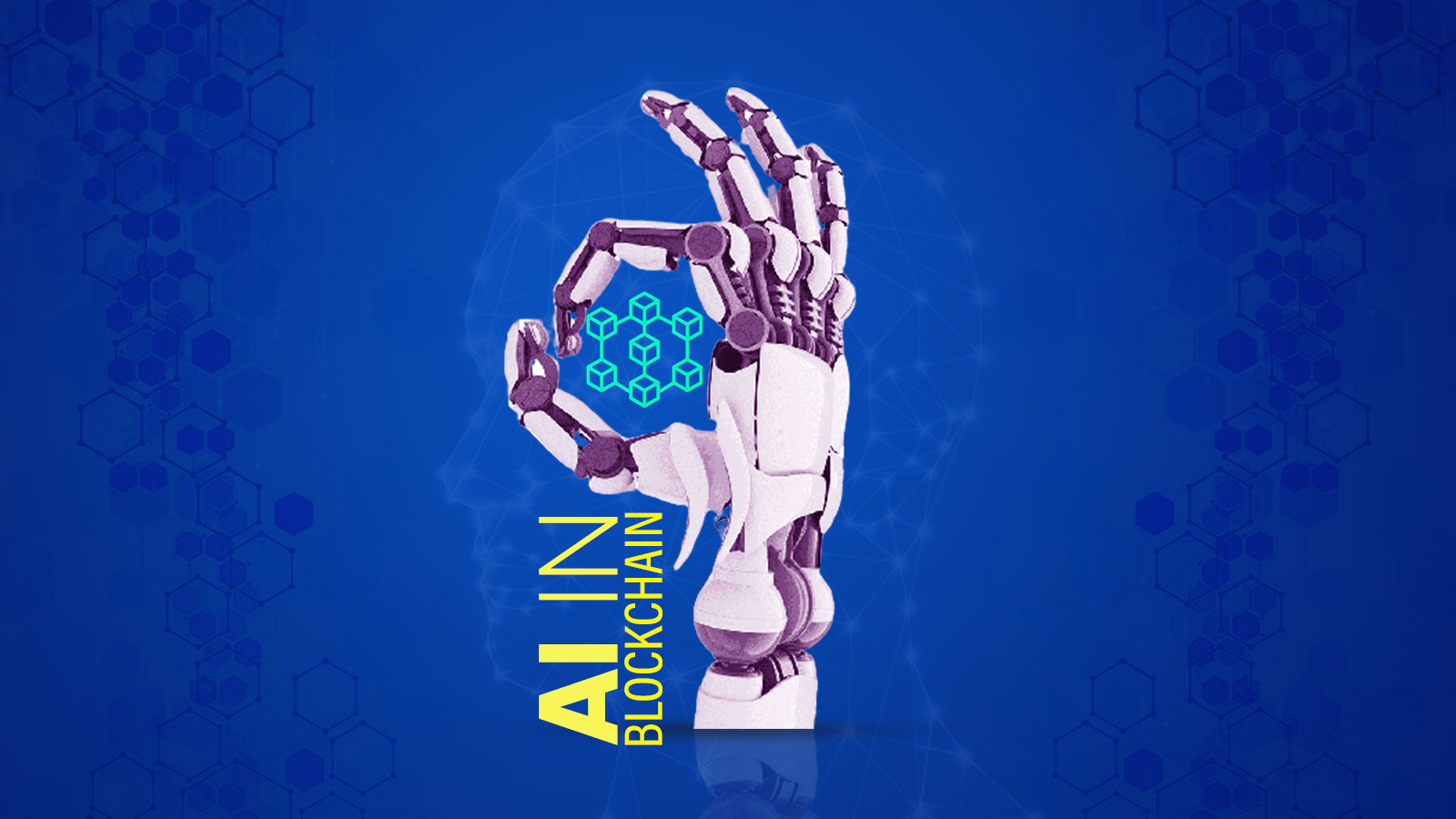
Grazie alla blockchain e all’intelligenza artificiale, l’intero settore finanziario ha subito una trasformazione radicale.
Cosa pensi che accadrebbe se prendessi le caratteristiche migliori di ciascuno?
L’intersezione di AI e Blockchain sta cambiando il volto del settore dei servizi finanziari e non si tratta semplicemente di una moda passeggera. Imparare la fusione è utile agli espatriati di tutto il mondo per gli stessi motivi per cui è utile alla gente del posto.
Leggere: L’intelligenza artificiale nelle criptovalute
introduzione
Rendendo le macchine più intelligenti degli esseri umani, l’intelligenza artificiale sta cambiando interi mercati. L’uso dell’intelligenza artificiale sta cambiando il modo in cui operano le aziende, in particolare nei settori dell’apprendimento automatico e dell’elaborazione del linguaggio naturale. Con un numero sempre maggiore di aziende che abbracciano soluzioni di intelligenza artificiale per l’automazione, l’analisi predittiva e l’esperienza del cliente su misura, si prevede che il mercato delle soluzioni basate sull’intelligenza artificiale assisterà a una forte crescita nei prossimi anni.
La sicurezza e la trasparenza dei dati sono state trasformate dalla tecnologia blockchain, un registro distribuito che non può essere alterato. L’attenzione iniziale del progetto era rivolta alla criptovaluta, ma da allora ha trovato utilizzo in un’ampia gamma di settori, come l’assistenza sanitaria, la gestione della catena di fornitura e il settore bancario. L’adozione della Blockchain in queste aree sta determinando la dimensione del mercato poiché fornisce transazioni sicure, trasparenti e tracciabili. La tecnologia Blockchain è emersa come una componente essenziale della rivoluzione digitale. L’intelligenza artificiale (AI) e la tecnologia blockchain lavorano insieme per risolvere problemi di sicurezza, trasparenza ed efficienza dei dati.
Si prevede che il valore di mercato combinato delle tecnologie AI e blockchain supererà i 703 milioni di dollari entro il 2025, crescendo a un CAGR del 25,3% dal 2020 al 2025.
Il potere della Blockchain: come funziona con l’intelligenza artificiale?
Entro il 2030, PwC stima che l’intelligenza artificiale contribuirà con 15,7 trilioni di dollari all’economia globale, portando ad un aumento del 14% del PIL globale. Entro lo stesso anno, Gartner prevede che il valore aggiunto dalla tecnologia blockchain alle aziende aumenterà fino a 3,1 trilioni di dollari.
Una Blockchain è a registro distribuito o database archiviato in diverse posizioni su una vasta rete di computer. Essendo un registro delle transazioni decentralizzato e sicuro, svolgono una funzione vitale nei sistemi di criptovaluta. Puoi utilizzarli per qualcosa di più delle semplici criptovalute. Qualsiasi settore può utilizzare la blockchain per creare record immutabili. In questo senso, “immutabile” si riferisce a tutto ciò che non può essere cambiato o modificato.
Gli stranieri che vivono all’estero e inviano denaro alle proprie famiglie trarranno grandi benefici dalla formazione su Blockchain e AI. Capire quando, quando e come utilizzare Blockchain e AI è reso più semplice con le informazioni fornite in questo blog. La Blockchain è diventata ben riconosciuta grazie al suo utilizzo in valute digitali. Tuttavia, le sue applicazioni si sono espanse ben oltre il regno delle criptovalute e dei dati correlati. Fin dalla sua introduzione, la Blockchain ha trovato applicazioni al di fuori della finanza, in particolare nei settori delle risorse umane, della registrazione delle proprietà e della catena di fornitura, dove viene utilizzata per archiviare e verificare i dati.
Satoshi Nakamoto è ampiamente riconosciuta per aver concettualizzato e sviluppato la tecnologia Blockchain, la spina dorsale della prima criptovaluta moderna. Nel 2009 è stato rilasciato al pubblico generale. Le transazioni finanziarie sulla blockchain, come la fatturazione e l’elaborazione dei pagamenti, potrebbero esserlo automatizzato dall’intelligenza artificiale ridurre il ruolo degli intermediari e aumentare la produttività. Poiché tutti i partecipanti alla rete hanno accesso alle stesse informazioni, la blockchain può essere utilizzata anche per tenere sotto controllo gli elementi e garantirne la legittimità e la trasparenza.
Pochi progetti AI e Blockchain
Commento esclusivo
Abbiamo ricevuto commenti esclusivi da uno dei nostri AiThority è ospite nella sua firma di Evan Vandenberg è cofondatore e CEO di Dibbs.
Allora, perché la tecnologia blockchain è necessaria per questo passaggio al futuro? Fornisce alle aziende una serie di vantaggi, tra cui:
- Maggiore sicurezza e trasparenza: Le aziende possono utilizzare la blockchain per tracciare e verificare le transazioni in modo più accurato grazie alla sua natura sicura e a prova di manomissione. Inoltre, poiché la blockchain è decentralizzata, questo aiuta le aziende a evitare le frodi: nessuno può apportare modifiche o prelievi senza informare gli altri.
- Costi ridotti: La blockchain può aiutare le aziende a ridurre i costi in diversi modi. Ad esempio, la blockchain può essere utilizzata per automatizzare pagamenti e liquidazioni. Ciò può far risparmiare alle aziende tempo e denaro sulle spese di elaborazione. Inoltre, la blockchain può essere utilizzata per creare nuovi flussi di entrate, che possono aiutare le aziende a compensare i propri costi.
- Nuovi flussi di entrate: Sia che forniate ai clienti prodotti, servizi o esperienze, la blockchain può aprire nuove opportunità di business – ne parleremo più avanti.
Applicazioni dell’Intelligenza Artificiale con la Tecnologia Blockchain
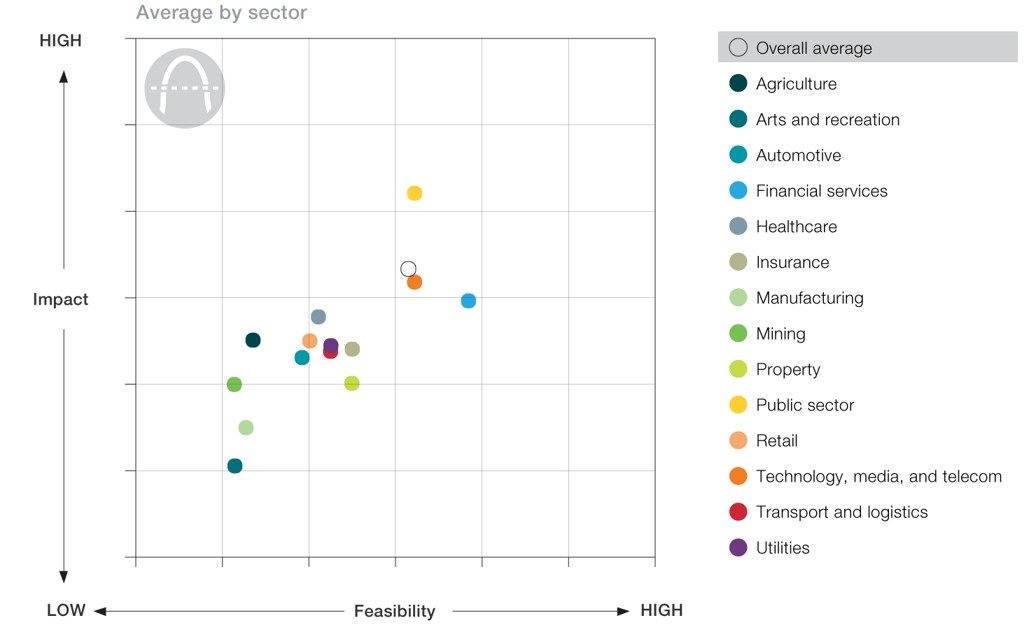
Da questa rappresentazione grafica è stata ripresa McKinsey.
L’intelligenza artificiale (AI) ha il potenziale per migliorare quasi ogni aspetto dell’assistenza sanitaria, dalla presentazione di approfondimenti sul trattamento e la soddisfazione delle richieste degli utenti all’identificazione di approfondimenti dai dati dei pazienti e alla rivelazione di modelli. La tecnologia Blockchain consente la condivisione sicura di informazioni sensibili sui pazienti, come le cartelle cliniche elettroniche, tra gli operatori sanitari.
L’uso della blockchain e dell’intelligenza artificiale nel settore farmaceutico ha il potenziale per migliorare notevolmente il tasso di successo degli studi clinici e aumentare la trasparenza e la tracciabilità lungo tutta la catena di approvvigionamento dei farmaci. Gli studi clinici possono raggiungere una maggiore integrità dei dati, trasparenza, monitoraggio dei pazienti, gestione del consenso e automazione della partecipazione agli studi e della raccolta dei dati combinando la moderna analisi dei dati con un’architettura decentralizzata.
Facilitando la fiducia, riducendo gli attriti nelle transazioni tra più parti e accelerando i tempi delle transazioni, blockchain e intelligenza artificiale stanno rivoluzionando il settore dei servizi finanziari. I candidati accettano di consentire l’accesso ai propri dati archiviati su un registro distribuito.
La tecnologia blockchain migliora la trasparenza e l’efficienza nel finanziamento della catena di fornitura. Documentando ogni fase della catena di approvvigionamento su una blockchain, le parti interessate possono verificare la legittimità, la qualità e la provenienza del prodotto. Ciò consente ai finanziatori di prestare sulla base di dati verificabili, diminuendo le frodi e migliorando la disponibilità di prestiti per le PMI. Analizzando i record di spedizione e i modelli di mercato, l’intelligenza artificiale può prevedere la domanda, ottimizzare la gestione dell’inventario e ridurre i rischi della catena di approvvigionamento.
I chatbot e gli assistenti virtuali basati sull’intelligenza artificiale migliorano il servizio bancario ai clienti. Questi sistemi intelligenti possono rispondere a domande, fornire suggerimenti e fornire assistenza 24 ore su 24, 7 giorni su 7. I chatbot basati sull’intelligenza artificiale utilizzano l’elaborazione del linguaggio naturale e l’apprendimento automatico per comprendere le preferenze dei clienti, prevedere i requisiti e fornire risposte personalizzate.
- Ottimizzazione dei contratti intelligenti
Gli strumenti basati sull’intelligenza artificiale monitorano continuamente i contratti intelligenti, tenendo d’occhio le transazioni. Possono rilevare immediatamente attività non autorizzate o insolite, attivando avvisi per un’azione immediata. Questo monitoraggio in tempo reale garantisce che il contratto si comporti come previsto. L’intelligenza artificiale utilizza l’analisi predittiva per anticipare potenziali problemi prima che diventino problemi. Analizzando i dati storici, l’intelligenza artificiale può prevedere le sfide nell’esecuzione dei contratti, consentendo misure preventive.
I metodi tradizionali di verifica dell’identità spesso si basano su processi complessi, dalla presentazione di documenti di identità fisici alla risposta a domande personali. Tuttavia, con l’avvento della tecnologia Blockchain e l’introduzione dell’intelligenza artificiale, questo paradigma sta cambiando radicalmente.
Vantaggi dell’intelligenza artificiale nella Blockchain
- Gestione dei dati migliorata
- Sistemi di verifica globalizzati
- Consumo energetico ottimizzato
- Sistemi di audit e compliance innovativi
- Scalabilità migliorata
- Finanza più intelligente
- Governance trasparente
- Misure di sicurezza aumentate
- Vendita al dettaglio intelligente
- Analisi predittiva intelligente
- Diritti di proprietà intellettuale digitale
- Gestione innovativa dei dati
Sfide
- Sfide tecniche
- Scalabilità
- Regolamento
- Privacy dei dati
- Interoperabilità
- Adozione
Tendenze
- IA decentralizzata
- Apprendimento federato
- Reti blockchain basate sull’intelligenza artificiale
- Contratti intelligenti basati sull’intelligenza artificiale
- Gemelli digitali basati sull’intelligenza artificiale
Futuro
- Convergenza migliorata tra intelligenza artificiale, blockchain e realtà virtuale
- Interoperabilità ed efficienza
- Crescita della finanza decentralizzata (DeFi)
- Adozione della Blockchain aziendale
- Aumento delle valute digitali delle banche centrali (CBDC)
- Educazione potenziata sulla Blockchain
- Blockchain abilitata all’intelligenza artificiale
- Evoluzione normativa e giuridica
Domande frequenti: AI e Blockchain
Cos’è il BaaS?
Blockchain come servizio o Baas in breve. Blockchain-as-a-service consente alle aziende di noleggiare l’infrastruttura blockchain nel cloud, seguendo la tendenza di rendere la tecnologia disponibile su abbonamento.
Nello specifico, il fornitore di servizi offrirà, manterrà e ospiterà tutto il software e l’hardware necessari per le applicazioni blockchain. Qualsiasi piattaforma blockchain, come Ethereum, Hyperledger Fabric, Corda, Bitcoin, Chain Core, BlockApps o Quorum, può essere utilizzato dal partner Baas per costruire la rete blockchain.
L’intelligenza artificiale può costruire blockchain?
Esempi di aree che possono essere migliorate utilizzando software di intelligenza artificiale includono scalabilità, efficienza e sicurezza sulla blockchain. Lo sviluppo di contratti intelligenti e il miglioramento della correttezza delle transazioni potrebbero potenzialmente portare a un’automazione delle procedure più sicura e rapida.
La tecnologia blockchain può essere sostituita dall’intelligenza artificiale?
L’orologio è l’unica costante qui. Poiché la tecnologia blockchain si sta ancora evolvendo rapidamente, al momento è impossibile automatizzarne lo sviluppo.
È possibile estrarre Bitcoin utilizzando l’intelligenza artificiale?
Raffinando algoritmi, fornendo informazioni dettagliate sui dati in tempo reale e consigliando attrezzature all’avanguardia, l’intelligenza artificiale offre modi per potenziare le operazioni di mining. Poiché l’intelligenza artificiale ha il potenziale per migliorare l’efficienza energetica, la pianificazione strategica e la sostenibilità del mining di criptovalute, potrebbe svolgere un ruolo cruciale nel futuro del settore.
Conclusione
L’integrità dei set di dati è possibile grazie alla combinazione di IA e Blockchain. Poiché i dati sono indistruttibili, possono essere utilizzati per rafforzare la sicurezza e anticipare le intrusioni in tempi record. Due degli sviluppi più discussi recentemente nel campo dell’IT sono stati la blockchain e l’intelligenza artificiale. I ricercatori hanno discusso e studiato la fusione delle due tecnologie nonostante le loro parti e applicazioni in evoluzione molto distinte.
Sebbene l’intelligenza artificiale presenti molti vantaggi, come la capacità di elaborare rapidamente enormi quantità di dati e imitare il ragionamento umano, presenta anche diversi svantaggi, come il fatto che le scelte dell’intelligenza artificiale non sono sempre facili da comprendere. I documenti digitali immutabili e accessibili al pubblico e la tecnologia dei registri distribuiti sono due delle caratteristiche più salienti della blockchain che potrebbero far luce su un sistema di intelligenza artificiale altrimenti instabile. centralizzato e difficile da capire. Nella misura in cui queste caratteristiche sono pratiche e desiderate nel contesto attuale, la blockchain ha il potere di offrire privacy, responsabilità e fiducia all’IA.
aumento, automazionee la potenza di elaborazione sono altre tre aree in cui la blockchain potrebbe migliorare l’intelligenza artificiale. I settori sanitario, delle scienze della vita, dei servizi finanziari e della catena di fornitura sono solo alcuni dei settori che hanno già iniziato a esplorare la potenziale integrazione della tecnologia blockchain con l’intelligenza artificiale.
[To share your insights with us, please write to sghosh@martechseries.com]
News
Blockchain Technology Will Transform Water Access and Management Globally

Disclosure: The views and opinions expressed here are solely those of the author and do not represent the views and opinions of the crypto.news editorial team.
Access to clean water is a basic human need, yet billions of people around the world still struggle to get it. According to the World Health Organization, over 2 billion people live in countries suffering from severe water stress, and this number is expected to continue to grow due to climate change and population growth.
Traditional water management systems have struggled to address these challenges, often hampered by inefficiencies, lack of transparency, and misallocation of resources. Blockchain technology offers a promising solution to these challenges, providing equitable access and sustainable use of this crucial resource.
The current state of water management
Water management today faces several pressing issues. Inefficiencies in water supply, distribution, and use, coupled with a lack of real-time monitoring, often result in resource waste and misallocation. Many water sources fail to realize their full potential due to infrastructure and financing shortfalls. For example, the Environmental Protection Agency (EPA) report indicated that the United States would need to invest $625 billion over the next 20 years to repair, maintain and improve the country’s drinking water infrastructure due to aging pipes and other infrastructure problems. Additionally, in the United States alone, household leaks can to waste nearly 900 billion gallons of water per year nationwide. This is equivalent to the annual domestic water consumption of nearly 11 million homes.
Furthermore, corruption and mismanagement of water resources can cause unequal distribution, with disadvantaged communities often bearing the brunt of water scarcity. For example, South Africa is struggling with myriad challenges to its water security: drought, inadequate water conservation measures, outdated infrastructure, and unequal access to water resources. The country faces significant water scarcity, with demand expected to outstrip supply by 2030, creating a projected gap of 17%.
Furthermore, the global water industry is highly monopolized, with a few key players controlling a significant share of the market. These companies exert substantial influence over the water supply chain, often prioritizing profit over equitable distribution and environmental responsibility. This concentration of power can lead to inflated prices and limited access for vulnerable populations. The global bottled water market alone is projected to reach $509.18 billion by 2030, with these large companies capturing a significant share of revenue. This monopolization exacerbates existing inequalities in water access and highlights the need for more decentralized and community-driven water management solutions.
Source: Grand View Search
The potential of blockchain in water management
Blockchain technology can address these issues by providing a transparent, secure, and decentralized platform for water resource management. This approach offers several advantages:
- Transparency and accountability. Blockchain’s immutable ledger ensures that all transactions and data entries are transparent and cannot be changed once recorded. This transparency can reduce corruption and ensure that water resources are allocated fairly and efficiently. For example, blockchain can be used to track water usage from source to end user, providing a clear record of how water is distributed and used. This level of transparency can help hold authorities accountable and manage water resources sustainably.
- Efficient resource management. Blockchain can facilitate the creation of smart contracts, which are self-executing contracts with the terms of the agreement written directly into the code. These contracts can automate water distribution based on real-time data, directing water to where it is needed most. For example, smart contracts could be used to manage urban water supply systems, automatically adjusting water distribution based on real-time consumption patterns and demand. This can help optimize water use, reduce waste, and ensure that households and businesses receive the right amount of water at the right time.
In Dubai, the Dubai Electricity and Water Authority (DEWA) has implemented a blockchain-based smart water network initiative as part of its broader smart city strategy. This project integrates blockchain technology with IoT sensors to monitor water usage in real time, manage distribution, and detect leaks. The decentralized ledger ensures data integrity and transparency, enabling more efficient water management and reduced waste. DEWA’s initiative aims to improve sustainability and resource management in the rapidly growing city, highlighting the potential of blockchain to support urban water management and conservation efforts.
Community participation and ownership
Through blockchain, individuals can directly control and monetize their access to water resources, eliminating the need for third-party intermediaries. This direct control model allows local communities to make collective and transparent decisions about their water use. By managing their water directly from the source, communities can tailor water management practices to their specific needs, promoting equitable distribution and encouraging a sense of accountability and stewardship.
Additionally, future models could allow people to monetize their access to water through web3 technologies. For example, a community-to-business (C2B) model could allow people to sell water directly to companies. In this model, people do not have to own the water directly, but can profit by staking their tokens during event sales pools. This approach not only supports sustainable water management, but also creates economic opportunities for community members. Additionally, a “Burn to Secure” protocol can be used to provide water allocation rights. This protocol provides a true sense of water security and financial opportunity by allowing people to redeem their rights. This system not only secures future water allocations, but also increases token scarcity and value.
Additionally, a pure sense of investment is achieved through investments in water sources. This leads to potential financial returns and dividends by addressing the inefficiencies in water supply mentioned above. By investing to finance infrastructure projects, such as building factories and improving distribution systems, more water can be brought to communities, creating additional economic opportunities.
Monetizing water access through the C2B model, the “Burn to Secure” protocol, and investments in water sources all generate economic benefits for the community, promoting a more equitable and efficient water management system.
Overcoming challenges
While blockchain technology has the potential to improve water management, there are challenges to its adoption. The complexity of blockchain systems and the need for technological infrastructure can be barriers, especially in developing regions. Additionally, there are concerns about the significant energy consumption of blockchain networks. However, technological advances and the development of more energy-efficient blockchain solutions are helping to alleviate these concerns. Additionally, education and capacity building are key to ensuring stakeholders understand how to effectively use blockchain technology. Governments, NGOs, and private sector partners need to work together to provide training and support to communities and water management authorities.
Blockchain technology offers a practical and effective means to improve water management. In addition to addressing inefficiencies, blockchain empowers communities, promotes sustainable practices, and opens up new economic opportunities through models like community-to-business (C2B). As we face the growing challenges of climate change and population growth, blockchain is not only an innovative solution, but represents a fundamental shift in the way we manage and value water resources. Adopting blockchain in water management is essential to creating a sustainable and equitable future by changing the way we interact with and protect our most vital resource.

Jean-Hugues Gavarini
Jean-Hugues Gavarini is the CEO and co-founder of LAKE (LAK3), a real-world asset company leveraging blockchain technology to decentralize access to the global water economy. LAKE aims to ensure access to clean water for all, protect water resources, and deliver water to those in need through innovative technologies. Jean-Hugues has a diverse career spanning the luxury, fashion, and footwear industries. His career path includes notable successes at Mellow Yellow, Cremieux, and Tod’s. Raised between Silicon Valley and the French Alps, Jean-Hugues has always been immersed in technology and freshwater resources. In 2018, Jean became the CEO of Lanikea Waters, a water solutions entity based in the French Alps. In 2019, the concept of LAKE was born, embodying his commitment to innovation and sustainability.
News
Blockchain and AI Expo 2024
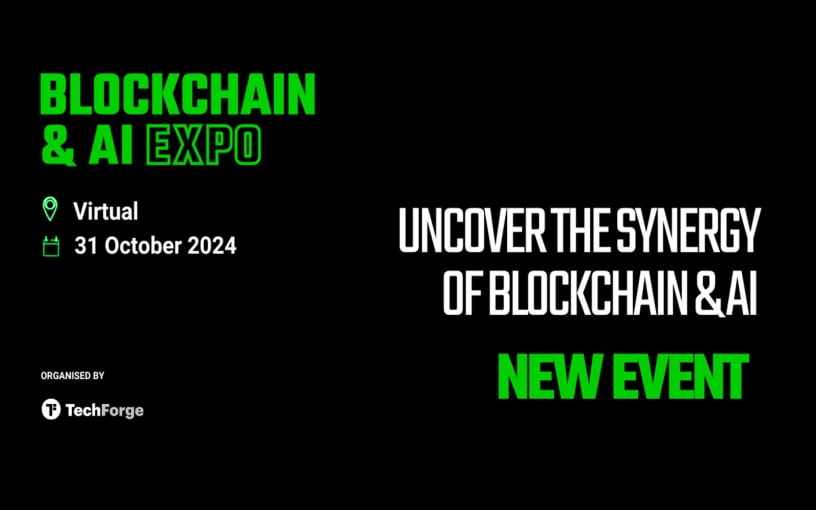
With rapid advances in the world of AI and blockchain, there are opportunities to leverage the security and transparency features of blockchain to improve the reliability and trust of AI systems and data transactions.
Explore the synergy of these advanced technologies in virtual mode Blockchain and AI Expowhich takes place on October 31, 2024 TO 10:00 GMT.
The event features cutting-edge presentations led by leading experts in evolving fields. Presentations are set to explore opportunities and challenges in the fusion of blockchain and AI, real-world applications, ethics, innovations in environmental sustainability, and more!
Gain a comprehensive understanding of how these technologies can synergistically drive innovation, optimize operations, and promote strategic growth opportunities. Develop your knowledge to facilitate informed decision making and give your company a competitive edge in the growing technology landscape.
News
Nigeria Eyes National Blockchain Nigerium for Data Sovereignty

Nigeria is keeping an eye on a new native blockchain network to protect the country’s data sovereignty.
According to local media, a team from the University of Hertfordshire has proposed the new blockchain, Nigeriato the National Information Technology Development Agency (NITDA).
Chanu Kuppuswamy, who leads the team, argued that relying on blockchain networks whose developers are located in other regions poses national security risks to the Nigerian government. He further said that Nigerium would allow the West African nation to customize the network to meet specific needs, while also promoting data sovereignty.
In his presentation, Chanu cited the recent migration of Ethereum to test of participation (PoS) consensus as an instance in which no Nigerians were involved but whose impact is far-reaching.
“Developing an indigenous blockchain like Nigerium is a significant step towards achieving data sovereignty and promoting trust in digital transactions in Nigeria,” he said.
While receiving the proposals in Abuja, NITDA’s Kashifu Abdullahi acknowledged the benefits a local blockchain would bring to Nigeria, including increased security of citizens’ data.
However, a NITDA spokesperson later clarified that Nigerium is still at the proposal stage and that the government has not yet decided whether to proceed or not.
“The committee is still discussing the possibility with stakeholders. Even if a decision is finally made, there is no guarantee that the name will be Nigerium,” the spokesperson told the media.
Nigerium’s reception in the country has been mixed. Some, like financial analyst Olumide Adesina, To say the network is “dead on arrival”. He believes the Nigerian government’s poor record in following through on its big technology plans will claim another victim. He pointed to the eNaira as a missed opportunity whose chances of success were much higher than those of Nigerium.
Others welcomed the proposal. Chimezie Chuta, who chairs the renewed The Nigerian Blockchain Policy Committee is “extremely optimistic“that Nigerium will be more successful than eNaira.
Speaking to a local news agency, Chuta stressed that eNaira failed because the central bank initiated the project on its own, without involving any stakeholders.
“They just cooked it and expected everyone to like it. [With Nigerium]there will be a lot of collaboration,” he said.
Registration of property title, digital identity and Certificate Verification are among the use cases that Nigerium is expected to initially target. However, Nigeria has already made progress in some of these fields through public blockchains.
SPPG, a leading school in governance and politics, announced in May the country’s first blockchain certificate verification system. Built on the The BSV BlockchainIt was developed in collaboration with the blockchain data recording company VX Technologies and local lender Sterling Bank.
Watch: The Future Has Already Arrived in Nigeria
 Italian: https://www.youtube.com/watch?v=M40GXUUauLU width=”560″ height=”315″ frameborder=”0″ allowfullscreen=”allowfullscreen”>
Italian: https://www.youtube.com/watch?v=M40GXUUauLU width=”560″ height=”315″ frameborder=”0″ allowfullscreen=”allowfullscreen”>
New to blockchain? Check out CoinGeek Blockchain for Beginners section, the definitive guide to learn more about blockchain technology.
News
Cambodian CBDC Developer to Build Palau Bond Market on Blockchain: Report
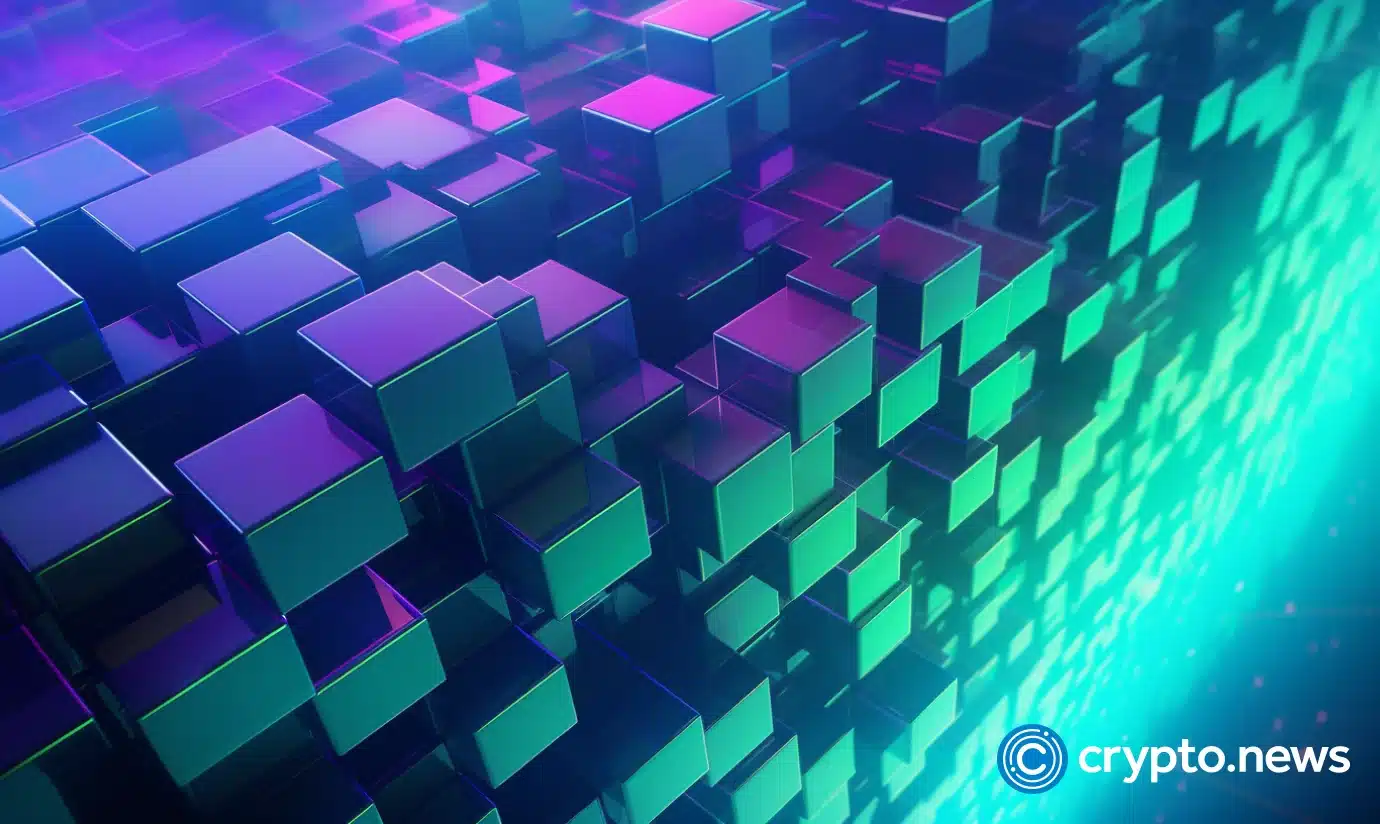
A Japanese fintech developer will build a blockchain-based bond market gateway for Palau, aiming to launch a trial in 2024 and a full launch the following year.
Japanese fintech developer Suramitsubest known for developing a central bank digital currency (CBDC) for Cambodia, is intended to build a Blockchain-gateway to the bond market based on the Pacific island nation of Palau, Nikkei He learned.
Soramitsu won the contract and plans to introduce the market on a trial basis in fiscal 2024, with a full launch scheduled for the following year, allowing the Palauan government to issue bonds to individual investors and efficiently manage principal and interest payments, according to the report.
The total cost of the project is estimated at several hundred million yen ($1.2 million to $5.6 million), less than half the cost of a non-blockchain alternative, people familiar with the matter said. The project has reportedly received support from Japan’s Ministry of Economy, Trade and Industry, with Japan’s foreign and finance ministries providing strategic and management advice on the project.
Soramitsu’s successful development of Cambodia’s CBDC in 2020 has boosted its reputation, with the digital currency’s popularity soaring, with over 10 million accounts opened by December 2023, representing 60% of Cambodia’s population. Following this, Cambodia’s central bank governor Chea Serey indicated intends to expand the reach of its CBDC internationally, particularly through collaboration with UnionPay International, the Chinese card payment service, and other global partners.
While Soramitsu’s work in Cambodia has been well received, the long-term popularity of CBDCs remains to be seen. As of late June, crypto.news reported a sharp drop in activity in India’s digital currency, the e-rupee, after local banks stopped artificially inflating its values.
According to people familiar with the matter, the Reserve Bank of India managed to hit the 1 million retail transaction milestone last December only after the metrics were artificially infiltrated by local banks, which offered incentives to retail users and paid a portion of the bank’s employees’ salaries using the digital currency.
-

 News1 year ago
News1 year ago“Captain Tsubasa – RIVALS” launches on Oasys Blockchain
-

 Ethereum1 year ago
Ethereum1 year agoComment deux frères auraient dérobé 25 millions de dollars lors d’un braquage d’Ethereum de 12 secondes • The Register
-

 News1 year ago
News1 year agoSolana ranks the fastest blockchain in the world, surpassing Ethereum, Polygon ⋆ ZyCrypto
-

 Videos1 year ago
Videos1 year agoHistoric steps for US cryptocurrencies! With a shocking majority vote!🚨
-

 Videos1 year ago
Videos1 year agoIs Emorya the next gem💎 of this Bitcoin bull run?
-

 News1 year ago
News1 year agoSolana Surpasses Ethereum and Polygon as the Fastest Blockchain ⋆ ZyCrypto
-

 Videos1 year ago
Videos1 year agoNexus Chain – Ethereum L2 with the GREATEST Potential?
-

 News1 year ago
News1 year agoFnality, HQLAᵡ aims to launch blockchain intraday repositories this year – Ledger Insights
-

 Ethereum1 year ago
Ethereum1 year agoScaling Ethereum with L2s damaged its Tokenomics. Is it possible to repair it?
-
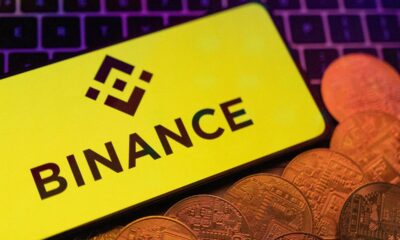
 Regulation1 year ago
Regulation1 year agoFinancial Intelligence Unit imposes ₹18.82 crore fine on cryptocurrency exchange Binance for violating anti-money laundering norms
-

 Bitcoin1 year ago
Bitcoin1 year agoBitcoin Drops to $60K, Threatening to Derail Prices of Ether, Solana, XRP, Dogecoin, and Shiba Inu ⋆ ZyCrypto
-

 News1 year ago
News1 year agoSendBlocks Debuts with Major Support to Improve Blockchain Data Management










